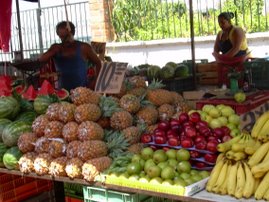Mexico City
EVERY 100 years, Mexico seems to have a rendezvous with violence. As the country gathers on Wednesday night for the ceremony of the “grito” — the call to arms that began the war for independence from Spain — we are enduring another violent crisis, albeit one that differs greatly from those of a century and two centuries ago.
In 1810 and 1910, revolutions erupted that lasted 10 years or more and were so destructive that both times it took decades for the country to re-establish its previous levels of peace and progress. Both episodes furthered Mexico’s political development, however, and our collective memory centers on these two dates that have taken on such symmetrical and mythical significance.
In 2010, Mexico is again convulsed with violence, though the size and scope of today’s conflict does not even remotely approach that of 1810 or 1910. This war is unfolding within and between gangs of criminals, who commit violent acts that are fueled only by a competitive lust for money. This is strikingly different from the revolutions of 1810 or 1910, which were clashes of ideals.
In 1810, Mexican-born Spaniards — the creoles — saw no recourse other than violence as the means to gain independence from Spain. Their principles were inspired by the doctrines of 16th-century thinkers like the Jesuit Francisco Suárez, who argued for “popular sovereignty.” But the creoles were also driven by specific grievances: they had long resented domination by men from the Iberian Peninsula; they were also indignant that the seemingly inexhaustible wealth of New Spain had been the principal financial resource for the frivolousness and senseless wars of the Spanish empire.
Yet the crown repeatedly ignored opportunities that might have avoided violent revolution — Spain certainly could have loosened connections with its overseas dominions and granted Mexico some degree of independence. When the provincial priest Miguel Hidalgo y Costilla shouted his call to arms, the grito, from the steps of his Dolores church, the war for independence finally exploded.
Shortly afterward, a vast, mostly Indian army, armed mainly with slings, stones and bludgeons, conquered various regional capitals, stopping just short of Mexico City itself. Though Father Hidalgo was captured and executed in 1811, the uprising continued under the leadership of another priest, José María Morelos, who would also be seized and killed by the Spanish government. But Mexico would finally gain its independence in September 1821.
From 1810 to 1821, the war for independence cost about 300,000 lives in a population of around 6 million. Afterward, state income, agricultural, industrial and mining production, and, above all, the availability of capital for investment did not reach their pre-1810 levels until the 1880s. And the material desolation was followed by almost five decades of insecurity on the roads, political instability and grievous civil and international wars.
There was also a series of confrontations between the country’s Liberal and Conservative factions until the victory of President Benito Juárez over the Conservatives and the French army that supported them. Following this unstable period, the Liberal government separated church and state and adopted a stable, electoral political structure.
Unfortunately for our fledgling democracy, Porfirio Díaz, Juárez’s greatest general, seized power in 1876. Still, under his long authoritarian regime, Mexico achieved notable material progress in the development of industry, the transportation network and foreign trade.
In 1910, after more than three decades of dictatorship, a large portion of the population believed that violence was the only way to overthrow Díaz. A brief, purely democratic revolution attained its aim but was soon reversed through a military coup supported by the American ambassador.
This new assault on the honor and well-being of the country — along with other accumulated grievances of peasants, workers and the nationalistic middle class — led to the first true social revolution of the 20th century.
The revolution of 1910 was even more destructive than the one in 1810. About 700,000 of some 15 million Mexicans died in warfare or through illness or starvation. An additional 250,000 emigrated to the United States. Industrial production plummeted. Ranches, haciendas and cities were demolished. And from 1926 to 1929 came the additional devastation of the Cristero war between Catholic peasants and the anti-clerical government; the state’s eventual victory took 70,000 lives.
Beginning in 1929, the country re-established a central government (though unlike the Juárez presidency, it was not a democratic one) under the hegemony of the Institutional Revolutionary Party. The government carried vast agricultural reforms, substantially improved the conditions for workers, established public institutions for social welfare that are still alive and well and oversaw decades of growth and stability. In the view of most historians, the great social reforms accomplished by later governments justified the Mexican Revolution’s decade of violence.
•
Today, a handful of powerful criminal groups has unleashed a blood-soaked and utterly illegitimate wave of violence against the Mexican government and Mexican society. This “war,” which rages in too many cities and states of my country, has created a truly Hobbesian situation of human brutality.
This situation is, in part, an unintentional result of Mexico’s definitive transition to democracy. In the past 10 years, there has been a centrifugal effect on power, loosening the authoritarian hand of the president and giving more latitude to local forces that, unfortunately, have included drug cartels and other criminal enterprises.
This war, though, will have to be won — and economic growth will have to be revivified — within the rules of democracy. Congress and President Felipe Calderón must agree on reforms to make the economy more open, competitive and efficient. And the struggle against organized crime will require a centralized police force that is more honest and professional; secure prisons; better control of the customs apparatus and the flow of money; and changes in the judicial system, along with nationwide campaigns against drug addiction.
Despite a bloody mythology that venerates the great protagonists of 1810 and 1910, most of whom met brutal deaths, the common denominators of our national history have been social, ethnic and religious coexistence; the peaceful construction of cities, villages and communities; and the creation of a rich cultural mosaic. Many of us want to believe that we are living through a nightmare from which, one morning, we will simply wake up, once again at ease.
But this is not the way things are. We are dealing with a situation generated, to a great extent, by the market for drugs and weapons in the United States and by the refusal of many Americans to recognize their own portion of responsibility in these tragic events. The drug war will have to be resolved on both sides of the border.
Nonetheless, on Wednesday night, as we have on every Sept. 15 for 200 years, Mexicans will gather together in the central squares of our cities and towns, even in the smallest and most remote villages. At midnight, we will hear a local governing official re-enact the grito uttered by Miguel Hidalgo, the “father of the fatherland.”
All the plazas across Mexico will be filled with light and music and color. And in the historic center of Mexico City, we will watch the fireworks and the parades and we will hear President Calderón ring the church bell once sounded by Miguel Hidalgo and then we will shout, jubilantly, with genuine feeling: “Viva México!”

.jpg)






























































































